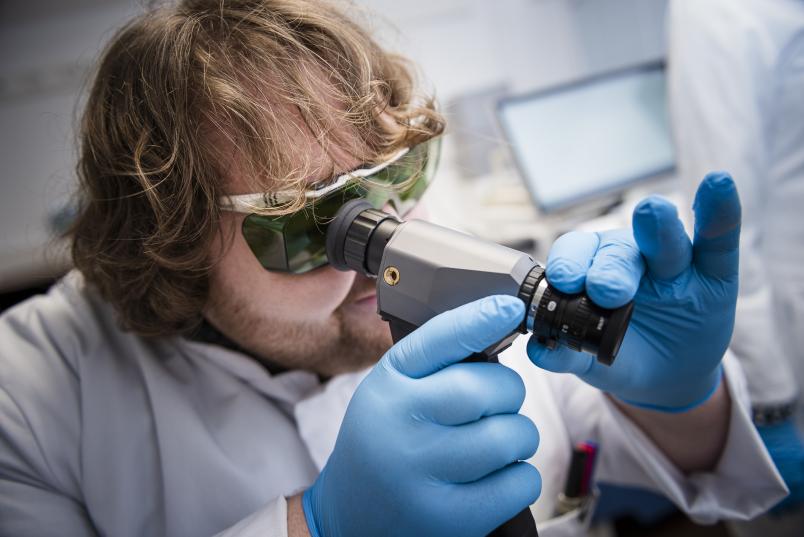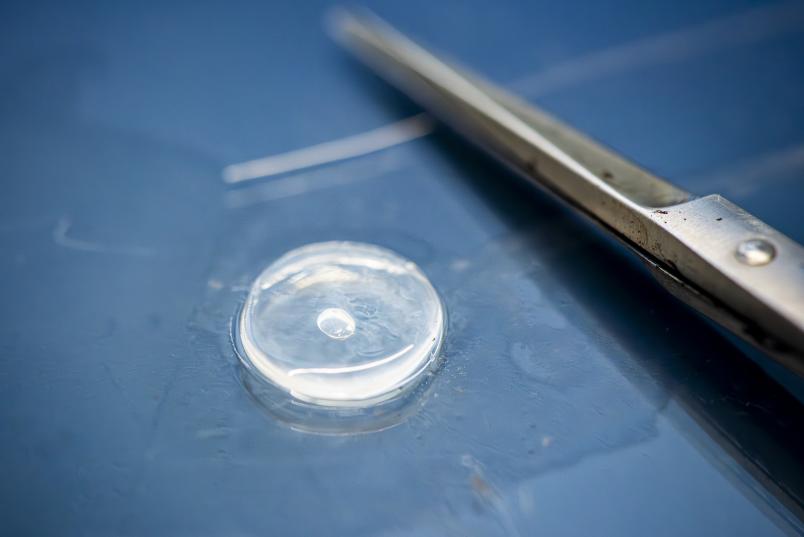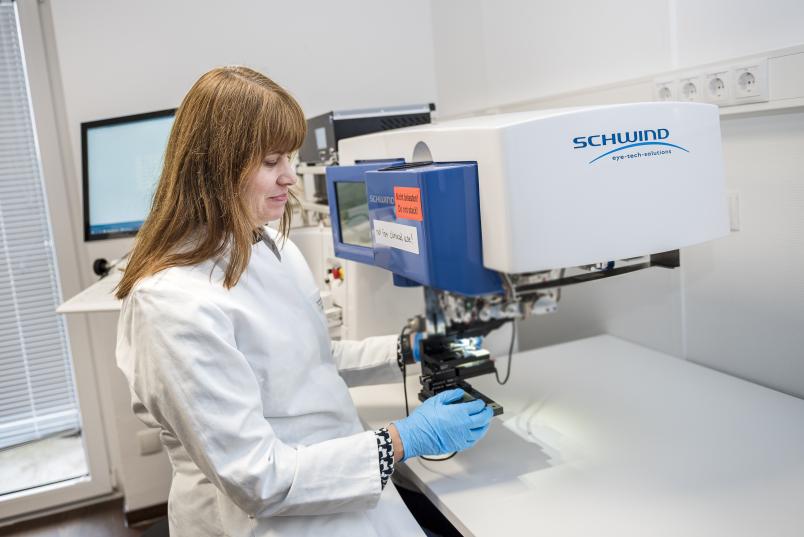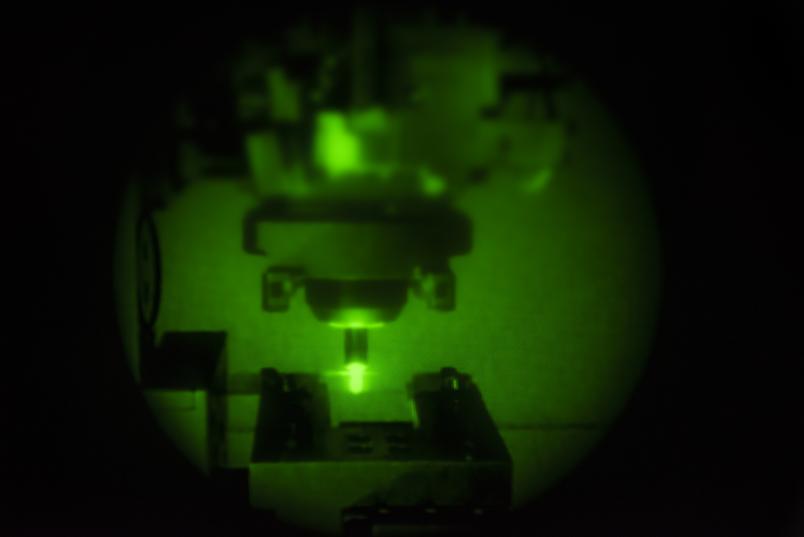Ophthalmology
Goodbye, Glasses
Laser treatment every few years and always being able to see clearly without glasses sounds like a dream. Researchers and industry partners are developing the method for turning this into reality.
They press, slip, hide the most important part of the face, are always getting misplaced, and are constantly dirty: Glasses are as common as they are unpopular. Most people have a pair at some point because near- and far-sightedness are frequent. Presbyopia also often occurs late in life. “Near-sightedness is becoming more prevalent among children, perhaps due to spending too much time in front of screens and not enough time outside,” says Professor Stephanie Joachim, who leads the Experimental Eye Research Institute at the University Eye Clinic in the Knappschaft Kliniken, University Hospital Bochum.
Because of the many drawbacks to glasses (and contact lenses, which not everybody can wear), it makes sense to directly resolve vision problems instead of balancing them out with contacts. Laser treatment for eyes has been around for decades. Established procedures involve femto-second lasers, which either ablate a portion of the cornea or open and lift the cornea to remove a section and then close the incision. The goal is always to change the refractive power of the tissue so that incoming light stimuli are directed precisely to the retina, resulting in sharp vision.
“Of course, this laser treatment is only possible within certain parameters,” explains Joachim. “For example, the procedure isn’t suitable for thin corneas. It also doesn’t help with presbyopia.” Most patients who opt for laser treatment today are no older than 30 or 40 years. It is also very likely that patients will still need glasses in the future because eyes are always changing.
Fear of the incision
“Many people with glasses are scared of the procedure because of the side effects,” says Joachim. “Our sense of vision and our eyes are very important to us humans, so we have to carefully consider whether we want to undergo an operation that involves cutting and removing tissue.”
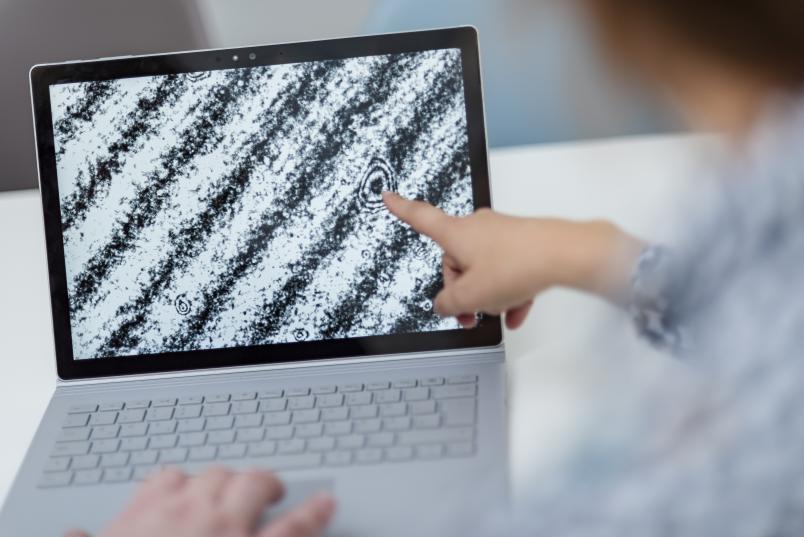
The laser treatment changes the cornea so that the refraction can be adjusted.
Joachim’s team is working with the company SCHWIND eye-tech-solutions on the project HARMONY, funded by the Federal Ministry of Research, Technology and Space, to develop a novel, non-invasive laser treatment method. “We want to change the refractive index of the cornea without any incisions,” explains Joachim as she discusses the goal of the LIRIC method (laser-induced refractive index change). The laser used for this, developed by SCHWIND, is also a femtosecond laser. The laser parameters are different from other procedures in that the pulses are well below the damage threshold, meaning there are no incisions or other damage to the tissue, although changes still occur. “We don’t yet know what exactly happens in the tissue in detail,” Joachim says. “We assume that water is pushed out. The extracellular matrix of the cornea cells may also be altered. We’re currently looking into it.”
Researchers at University Hospital Bochum are currently using a technical demonstrator built and provided by SCHWIND. They are examining the laser’s effect on the corneas of pigs whose eyes were byproducts of slaughter. The researchers laser fine lines into punched sections of the cornea, which is just a few micrometers thick. The upper part of the middle layer of the cornea is manipulated.
A fluid transition
“We program the device to carry out the actual laser irradiation independently,” explains Joachim. “This results in a change with a fluid transition to untreated tissue which can’t be seen with the naked eye, unlike prior laser methods in which the incisions are clearly visible, at least in the beginning.”
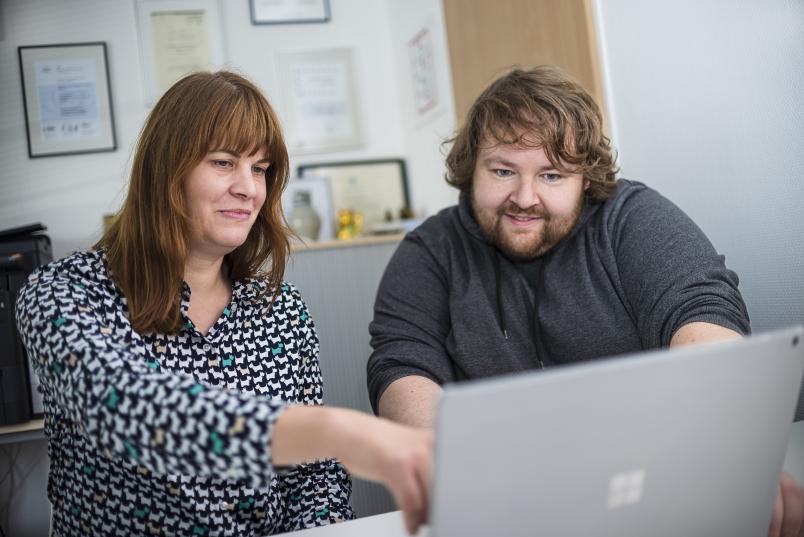
Stephanie Joachim (left) and Rainer Kötter hope to improve quality of life through a new laser therapy for vision problems.
Following the laser treatment, the researchers subject the corneas to a range of tests to verify the safety of the method. Optical coherence tomography (OCT) images show the thickness of the cornea, the biomechanical characteristics are examined, the absolute weight is measured. Tissue and gene analyses have to show whether there will be increased cell death in the treated region or if any conspicuous signs of inflammation can be seen. “Past results are all in the clear,” reports Joachim. “We couldn’t identify any shocking, harmful consequences.” Instead, the researchers see isolated alterations of the tissue with lens-like characteristics – exactly what they are hoping for. The change to the refractive index as a result of the treatment has already been proven.
“It will take years for the method to be ready for practical use,” Joachim clarifies. “When it reaches that point, this type of treatment might enjoy greater acceptance than current laser methods because it doesn’t damage anything.” For this reason, the procedure is also suitable for a broader range of patients, especially those with a very thin cornea. Presbyopia could also be treated. “I believe that the effects of the treatment will revert over time because the tissue regenerates,” Joachim says. “We may conduct this treatment every few years in order to avoid having to use unpopular alternatives like glasses or contact lenses.” The researcher is certain this would lead to a greater quality of life for many people. “Athletes and certain professions like pilots or firefighters, who have to wear protective equipment, could benefit greatly from not having to wear glasses anymore.”
